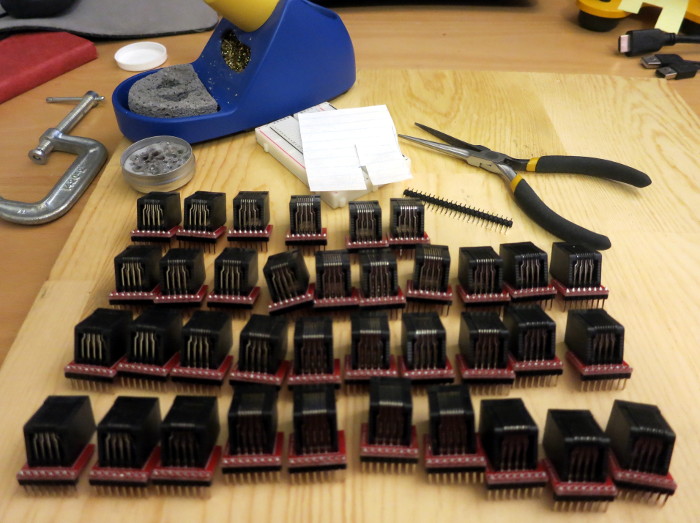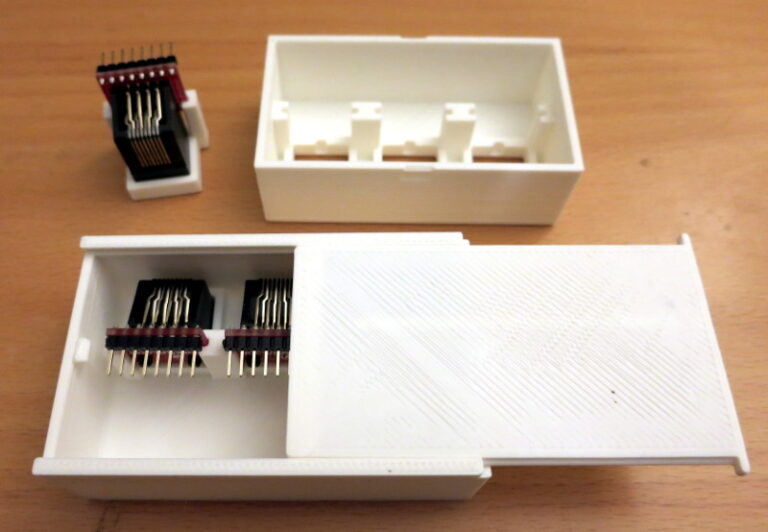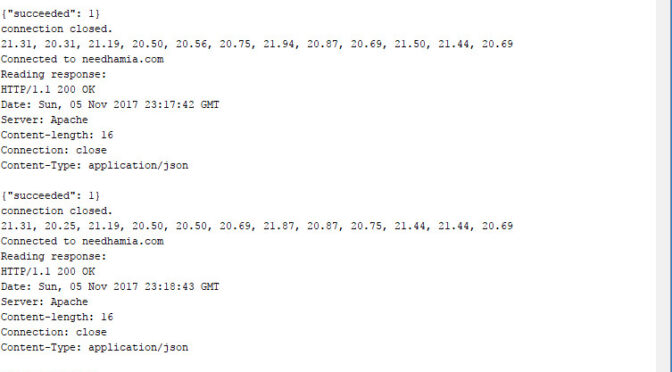
In my previous post, I designed a 3D printed sensor junction box for my well tank depth sensing project. In this post I solder… a lot.
I have 36 RJ45 jacks, 36 breakout boards for those jacks, and a pile of break-off headers for those breakout boards. Each breakout board has 8 holes for the RJ45 jack pins and 8 more holes for the header pins. That’s 36 * (8+8) connections I need to make to attach the breakout boards to the jacks. That’s 576 connections to solder!
Continue reading Well Depth Sensing: Soldering, Soldering, Soldering! →

In my previous post, I finished the Web Service that the ESP8266 uses to upload well tank temperatures (and eventually a depth estimate) to a cloud database. In this post, I turn to the mechanical design of the case for the RJ45 jacks for the 1-wire interface.
Continue reading Well Depth Sensing: Mechanical Design →

In my previous post, the ESP8266 Arduino Sketch was reading 12 temperature sensors. In this post, I describe the progress on the web side of things: the PHP web service that stores temperatures in an SQL database.
I’m really happy with the ESP8266 so far: it reliably connects to a given WiFi access point, and now it’s reliably doing an HTTPS POST of data to my PHP web service.
Continue reading Well Depth Sensing: Temperatures Are In the Database →
Technical Writing and Self-Pubilshing



